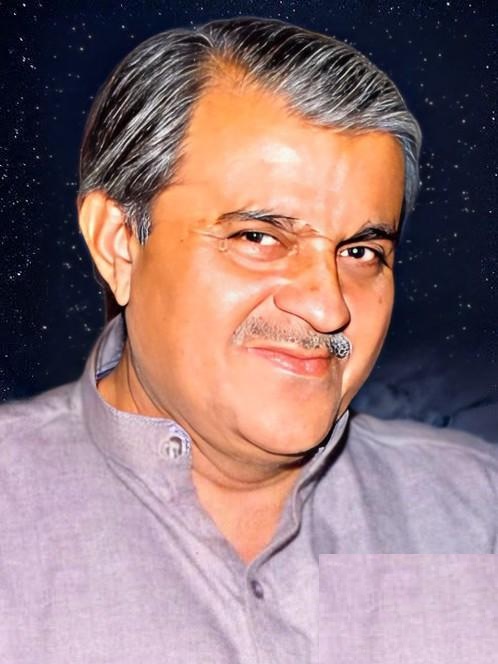
Besides 2 books containing children’s literature, Maqsood Gul wrote several poems, stories and columns for children in the weekly children’s pages of newspapers
By Yasir Qazi
The name and literary stature of Maqsood Gul in the recent past Sindhi literature does not need any formal introduction. He is not only known as a skilful poet, and lyricist, but also as a translator, researcher, journalist, editor, columnist, fiction writer, magazine editor, and children’s writer.
He was born on April 15, 1950, in the historic town of Ratodero in the Larkana district of Sindh, and passed away on February 14, 2015, in Karachi. He gave his readers 10 books in his life, including 2 poetry collections, 3 translations, a history book, 2 compilations, and 2 books containing children’s literature. Out of these ten books, his 8 books are in Sindhi and 2 are in the Urdu language.
Today, marking his 73rd birth anniversary, paying him reverence, we are only focusing on his contribution to children’s literature in Sindhi briefly.
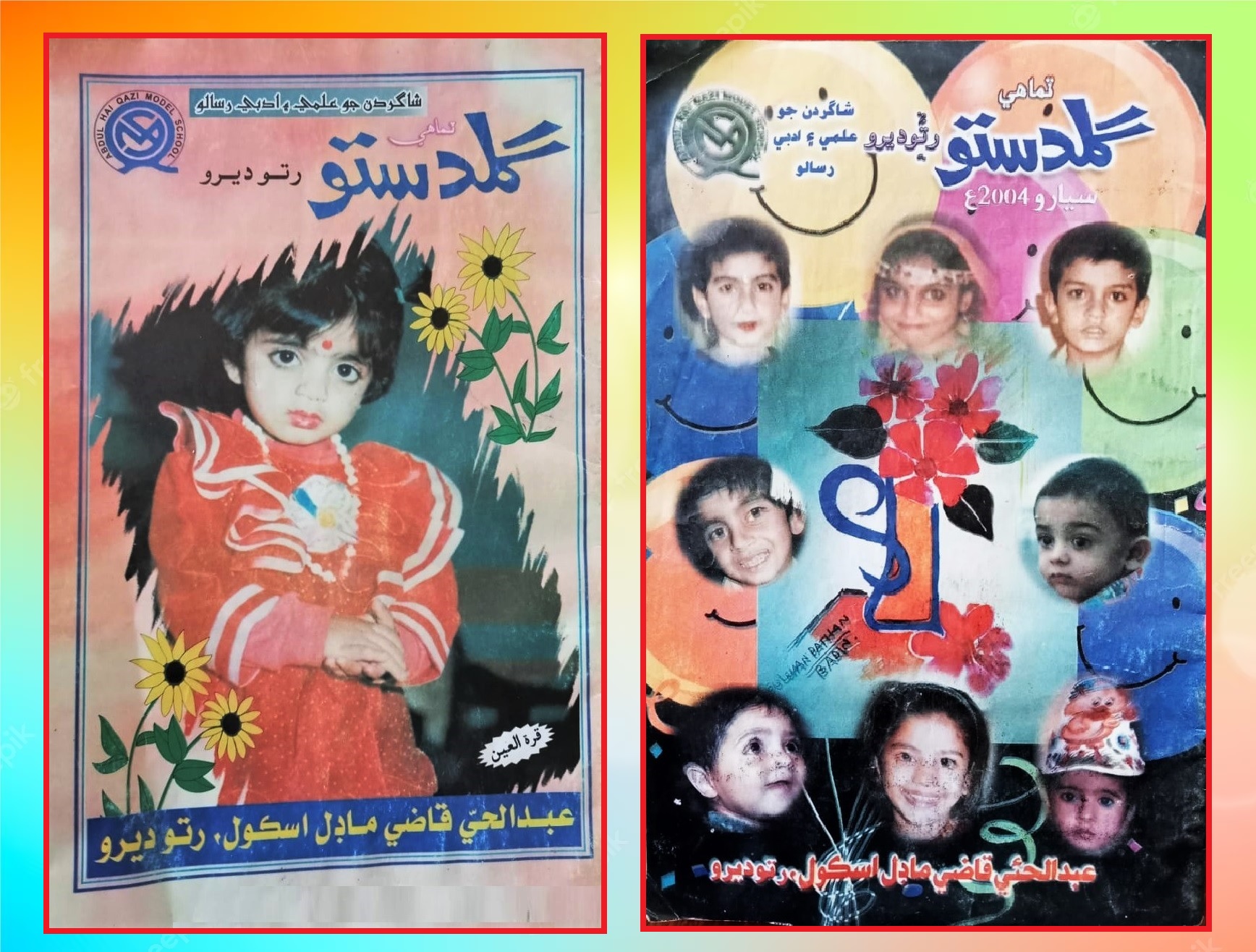 Maqsood Gul wrote several poems, stories and columns for children in the weekly children’s pages, being published in almost all the leading Sindhi newspapers during the decades of 1980s and 1990s, including Daily ‘Hilal-e-Pakistan’, Daily ‘Awami Awaz’ and Daily ‘Jaago’. He contributed a lot to ‘Hilal Pakistan’s children’s page, titled: “Baarirra Akhyun Ja Taarirra” (The children are the apples of everyone’s eyes), in which his column, titled: ‘Timoon Sharaararti’ (The naughty Timoon) became so popular among the children readers and grossed an earnest applaud from minors as well as adults. For this weekly column series, Maqsood Gul also used to design illustrations/cartoons by himself, which enhanced the layout of the column. He also contributed to ‘Gul Phul’ (Flowers and Flowers) the monthly children’s magazine, published by the Sindhi Adabi Board frequently, previously under the editorship of Anwar Halai and later under the supervision of Akbar Jiskani.
Maqsood Gul wrote several poems, stories and columns for children in the weekly children’s pages, being published in almost all the leading Sindhi newspapers during the decades of 1980s and 1990s, including Daily ‘Hilal-e-Pakistan’, Daily ‘Awami Awaz’ and Daily ‘Jaago’. He contributed a lot to ‘Hilal Pakistan’s children’s page, titled: “Baarirra Akhyun Ja Taarirra” (The children are the apples of everyone’s eyes), in which his column, titled: ‘Timoon Sharaararti’ (The naughty Timoon) became so popular among the children readers and grossed an earnest applaud from minors as well as adults. For this weekly column series, Maqsood Gul also used to design illustrations/cartoons by himself, which enhanced the layout of the column. He also contributed to ‘Gul Phul’ (Flowers and Flowers) the monthly children’s magazine, published by the Sindhi Adabi Board frequently, previously under the editorship of Anwar Halai and later under the supervision of Akbar Jiskani.
As far as Maqsood Gul’s books are concerned after his 2 books were published in 1983 and 1985 respectively (among which, one was a compilation of research papers written by Dr. Ata Muhammad ‘Hami’ and the second one was a translation of short stories by Krishan Chander, a distinguished Urdu short story writer of the subcontinent), his third book appeared as his poetry for children in Sindhi, which was titled: ‘Kirnna Kirnna’ (The beams). These ‘beams’ are the metaphor for children, who are the emerging rays of the Sun (the future). This book was published in December 1985 by Sindhrri Kitabi Silsilo, Ratodero, which contains 38 poems, titled: (1) ‘Hamd’ (In the praise of God) (2) Na’at (In the praise of the Holy Prophet of Islam) (3) ‘Baaran Ji Dua’ (The children’s prayer) (4) ‘Loli’ (A lullaby) (5) ‘Maau Ji Dua’ (a mother’s prayer) (6) ‘Ilm’ (The Knowledge) (7) ‘Quam Ji Amaanat’ (The fidelity of the Nation) (8) ‘Usool’ (Principles) (9) ‘Naseehat’ (Advice) (10) ‘Safaai’ (Cleansing) (11) ‘Dharti’a Ja Sitaara’ (Stars of the earth) (12) ‘Mukhrriyoon & Gul’ (Leaflets and flowers) (13) ‘Likhaan Tho’ (I am writing) (14) ‘Iraado’ (Determination) (15) ‘Mithrri Amarr’ (Sweet Mom) (16) ‘Ajrak Paayo’ (Let’s wear traditional shawl from Sindh, called ‘Ajrak’) (17) ‘Rail Raand’ (The train game) (18) ‘Maama Chand’ (Uncle Moon) (19) ‘Aas’ (The Desire) (20) ‘Barsaat’ (The Rain) (21) ‘Chholan Waaro’ (The Gram seller) (22) ‘Polish Waaro’ (The shoe polisher) (23) ‘Haari’a Jo Put’ (The farmer’s son) (24) ‘Baaran Jo Saal 1979’ (1979 – International Year of the Child) (25) ‘Ethiopia Ja Baar’a’ (The Ethiopian children) (26) ‘Chand’u Chawran Ji Maani’ (The moon seems to the hungry as the bread of the rice flour) (27) ‘Polio’ (Polio, the disease) (28) ‘Majboori (Compulsion) (29) ‘Us’a Chhanw’ (The sunlight and the shadow) (30) ‘Timoon’a Jo Khuwaab’ (The Timoon’s dream) (31) ‘Raani Bagh Jo Ser’ (The visit of ‘Rani Bagh’, the zoo in Hyderabad) (32) ‘Bhitai’ (Shah Abdul Latif Bhitai, the great poet) (33) ‘Larkanay Jo Ser’ (The tour of Larkana) (34) ‘Sukkur’ (Sukkur, the city) (35) ‘Sewhan’ (Sewhan, the city) (36) ‘Sitaara’ (Stars) (37) ‘Mehnat’ (Hardwork) (38) ‘Prem Pari & Kaanno Dev’ (The love-fairy and the ugly giant)
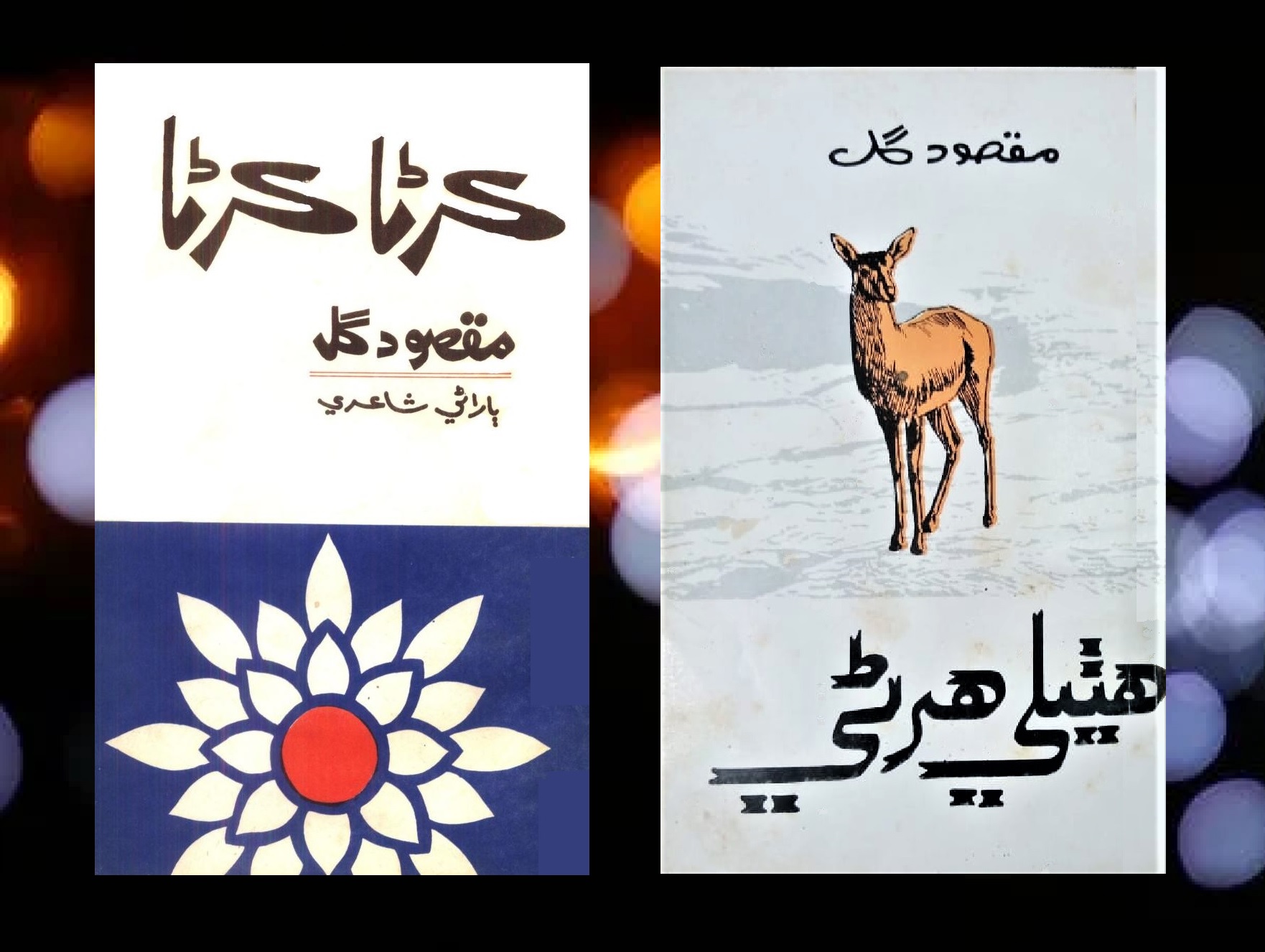 These poems are not only technically up to the mark of poetic rations, but also full of the message, concise and tranquil as well as fluent to read and memorize for kids. These potentials make these rhymes, efficacious stuff of children’s literature.
These poems are not only technically up to the mark of poetic rations, but also full of the message, concise and tranquil as well as fluent to read and memorize for kids. These potentials make these rhymes, efficacious stuff of children’s literature.
The foreword of this book is written Dr Memon Abdul Majeed Sindhi, eminent scholar, researcher and historian from Sindh, whereas the publisher note is written by Qazi Abdul Hayee ‘Qaail’ noted Sindhi poet, then In-charge of Sindhri publication and Maqsood Gul’s Father. The appealing and meaningful title cover is designed by Fatah Halepoto, who has also written the back title remarks regarding the significance of children’s literature and Maqsood Gul’s contribution in this regard.
“Hatheeli Harnni” (The Proud Deer) is Maqsood Gul’s fifth book in overall order and the second children’s book; while this was his first book of prose for children. This collection of stories by Maqsood Gul contains a total of nine stories, titled respectively, (1) “Kaanwan Ji Saazish” (The Conspiracy of the Crows), (2) the title story “Hatheeli Harnni” (The Proud Deer), (3) “Ghadaar Dedder” (The traitorous Frog), (4) “Imandari” (Honesty), (5) “Kaaro Chand” (The Black Cresent), (6) “Garrho Bhat” (Red Rice), (7) “Shaheed’a Jo Moat” (Martyr’s Death), (8) “Atal Faislo” (Irrevocable Decision) and (9) “Allah Saa’een-a Ji Gola” (In search of God).
In all these stories of the book, including characterization, scenery, dialogue etc. all the qualities of traditional fiction are not only incorporated to the fullest but are also balanced so that the reader’s attention while reading them is not moved.
The stories of children included in this book are also unique and valuable because, behind the outward expression of most of these stories, some local and national tragedy is also painted. Behind the characters of animals or infants, the notorious characters of our society and politics are concealed, who have been imperative in our history in some way, positive or negative. Due to this, these stories are not only exciting for children, but at the same time, an adult reader can also enjoy reading these fables.
Imam Rashidi has written the author’s introduction on the back title of this book. This book was published in 1993 by Parvano Sewhani under the banner of “Surhann Publications, Sewhan”. The title cover of this book also is designed by Fatah Halepoto.
Besides these two books for children, Maqsood Gul also published a quarterly magazine for children in Sindhi, titled: “GULDASTO” (The Vase) purely on non-commercial bases for the progress of children’s literature in Sindh; penning down the details about which, Khalid Azad writes in his book ‘The history of Sindhi Children’s Literature’:
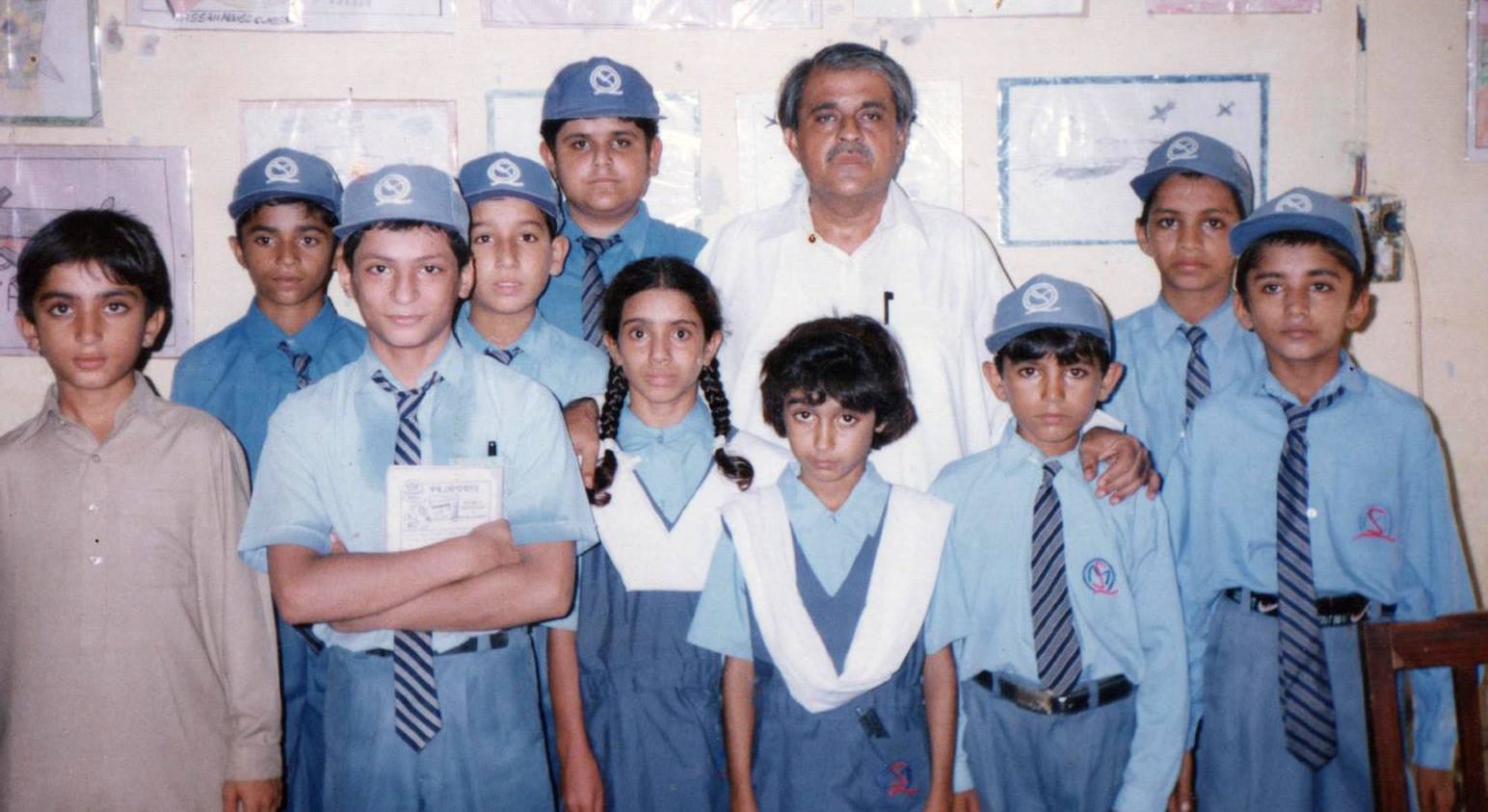
“The famous poet and writer Maqsood Gul started publishing the children’s academic literary magazine ‘Guldasto’ in May 2002 from Ratodero, district Larkana in Sindh. The editorial board included Mukhtar Ghumro, Qazi Akhtar Hayat, Yasir Qazi, Sapna Gul Qazi and Nusrat Kango. This demi-size magazine consisted of 12 pages and was published by Abdul Hayee Qazi Model School Ratodero. The special thing about this magazine was that it also assimilated an English section, to which four pages were dedicated at the end of each issue of the magazine. Children’s poems, stories, informational items, and other topics were included in this periodical. This journal became very popular among children. A total of nine (09) issues of the magazine were published and then it was discontinued. This magazine had a very imperative role in the development and expansion of Sindhi children’s literature.”
[“History of Sindhi Children’s Literature” (Volume I) Chapter Four: ‘Poets and writers, writing for children after partition’ Page number 158]
Beyond conventional annual school and college Magazines, it was perhaps the only, or one of a few regular magazines of Sindh, which was published by an educational institution, instead of a publishing house.
Apart from the above-mentioned contributions, Maqsood Gul wrote dozens of children’s songs for television, which were recorded for and aired in children’s weekly Sindhi TV program ‘Roshan Tara’. These songs written by Maqsood Gul were majorly recorded between 1990 till 2010. Shahid Bhutto, an eminent music composer, who composed songs for the said TV program for more than 3 decades claims that he had composed more than 200 songs written by Maqsood Gul for children for the program ‘Roshan Tara’. “I used to carry his children’s book ‘Kirna Kirna’ always in my bag because I used to compose his songs from it regularly and I have composed and recorded every poem of the said book of Gul Sahab in almost 3 tunes on an average and recorded in different voices.” he shares.
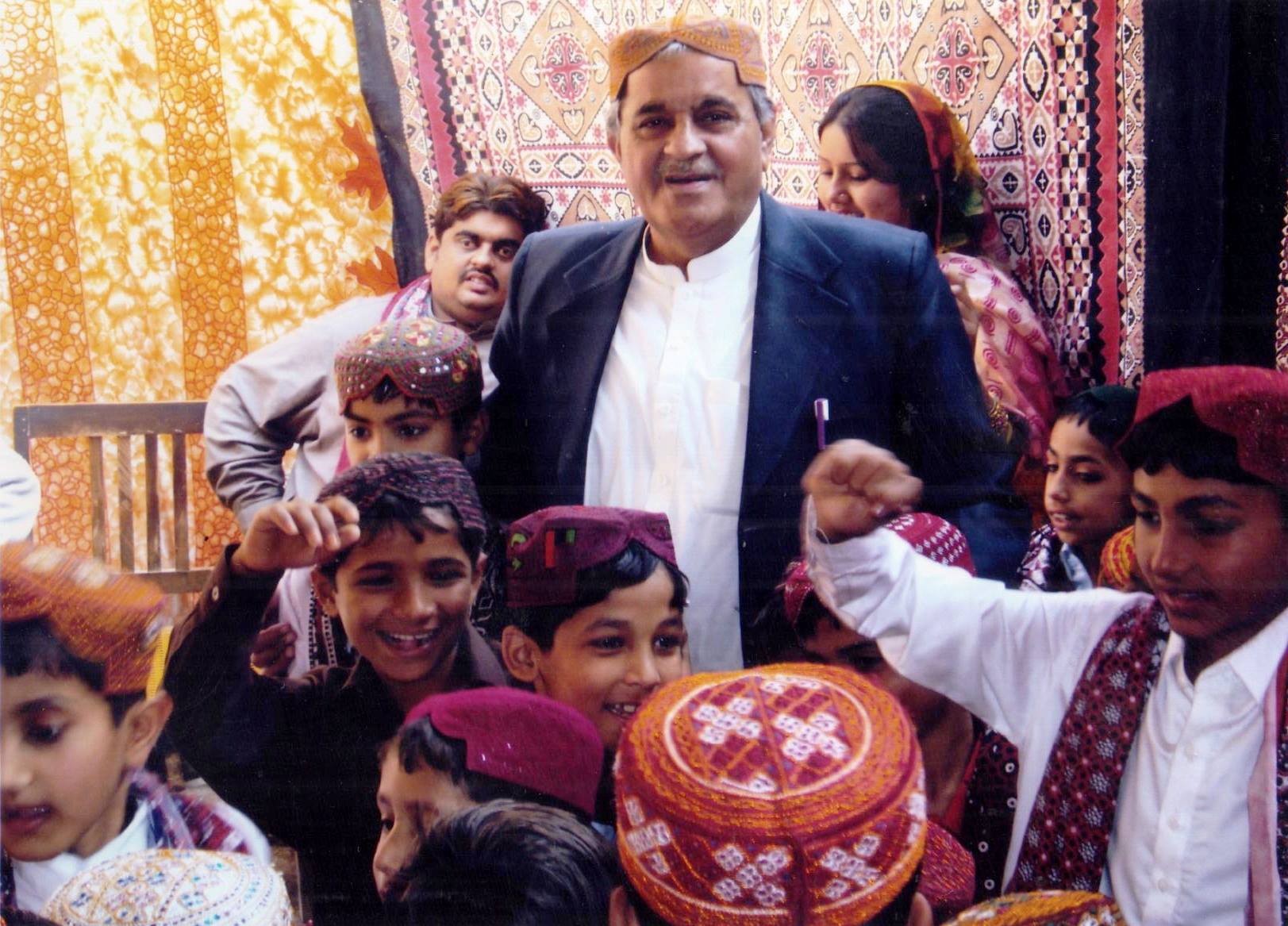 Maqsood Gul also patronized ‘Roshan Tara Balak Sangat’, a children’s literary circle, initiated by the then youth of Naodero during the decade of 1980s, in which Ayaz Jani, Zahid Mirani, Mathar Solangi and others took an active part under the leadership and advisory of Mr Gul, from the platform of which children’s enormous conventions were organized successfully in Naodero town of district Larkana. This organization played an active role in diffusing astuteness among the children lot of that era.
Maqsood Gul also patronized ‘Roshan Tara Balak Sangat’, a children’s literary circle, initiated by the then youth of Naodero during the decade of 1980s, in which Ayaz Jani, Zahid Mirani, Mathar Solangi and others took an active part under the leadership and advisory of Mr Gul, from the platform of which children’s enormous conventions were organized successfully in Naodero town of district Larkana. This organization played an active role in diffusing astuteness among the children lot of that era.
Maqsood Gul’s contribution to children’s literature in Sindhi must be much more than measured above, which can only be precisely reckoned by compiling his published works during almost 4 decades (1975-2015) sprinkled in all the children’s magazines and weekly pages, published by eminent newspapers of that time thoroughly.
This very contribution by him will always keep him thriving in the leaves of literary accounts of Sindh.
________________
 The author is a freelance radio and TV broadcast and print journalist, poet, prose-writer, researcher, columnist, blogger, translator, Media Expert, and author of 12 books in Sindhi. He writes regularly for esteemed English, Urdu and Sindhi papers and websites. He can be reached at djyasirqazi@yahoo.com
The author is a freelance radio and TV broadcast and print journalist, poet, prose-writer, researcher, columnist, blogger, translator, Media Expert, and author of 12 books in Sindhi. He writes regularly for esteemed English, Urdu and Sindhi papers and websites. He can be reached at djyasirqazi@yahoo.com